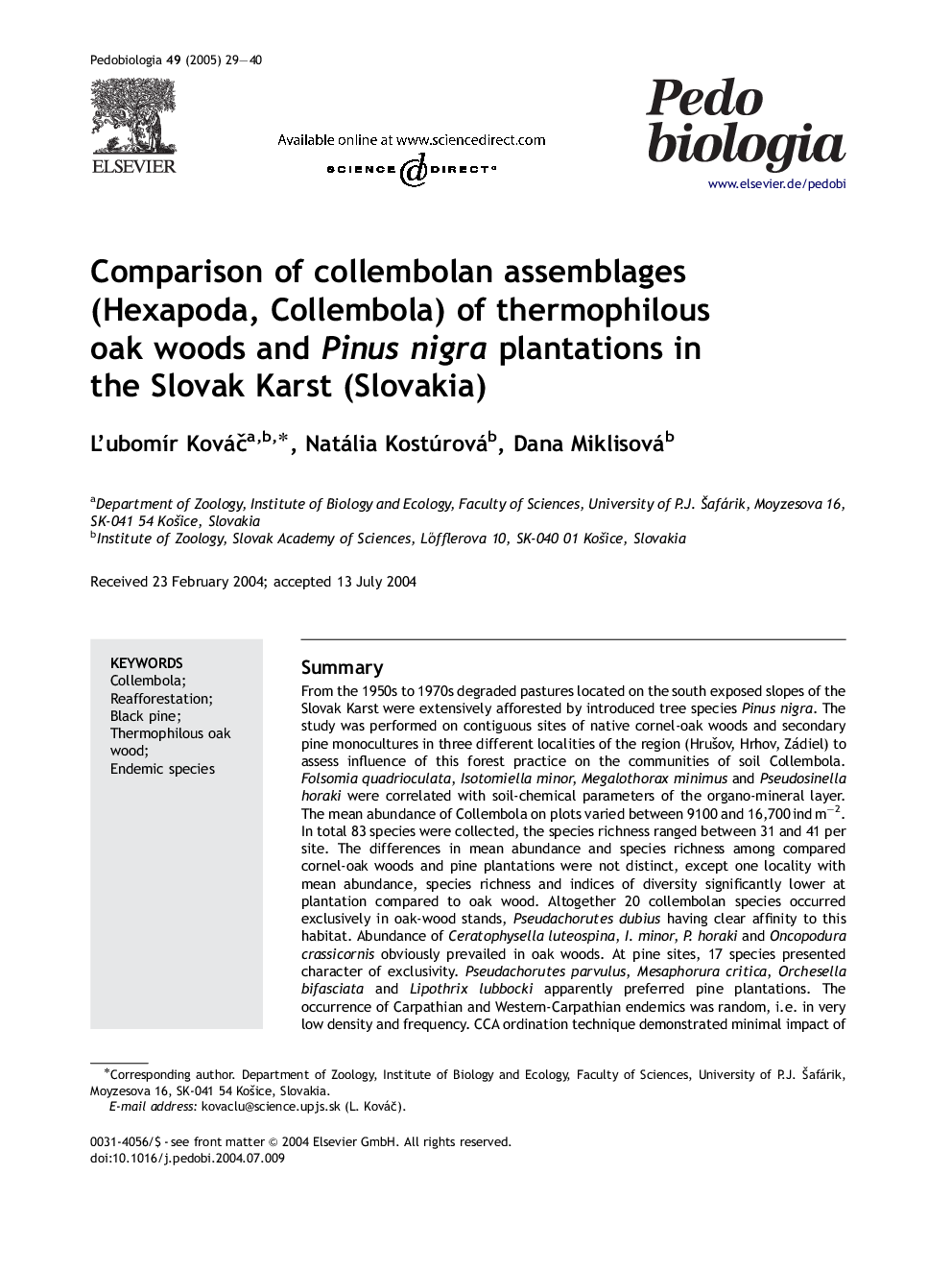| Article ID | Journal | Published Year | Pages | File Type |
|---|---|---|---|---|
| 10878718 | Pedobiologia | 2005 | 12 Pages |
Abstract
From the 1950s to 1970s degraded pastures located on the south exposed slopes of the Slovak Karst were extensively afforested by introduced tree species Pinus nigra. The study was performed on contiguous sites of native cornel-oak woods and secondary pine monocultures in three different localities of the region (HruÅ¡ov, Hrhov, Zádiel) to assess influence of this forest practice on the communities of soil Collembola. Folsomia quadrioculata, Isotomiella minor, Megalothorax minimus and Pseudosinella horaki were correlated with soil-chemical parameters of the organo-mineral layer. The mean abundance of Collembola on plots varied between 9100 and 16,700 ind mâ2. In total 83 species were collected, the species richness ranged between 31 and 41 per site. The differences in mean abundance and species richness among compared cornel-oak woods and pine plantations were not distinct, except one locality with mean abundance, species richness and indices of diversity significantly lower at plantation compared to oak wood. Altogether 20 collembolan species occurred exclusively in oak-wood stands, Pseudachorutes dubius having clear affinity to this habitat. Abundance of Ceratophysella luteospina, I. minor, P. horaki and Oncopodura crassicornis obviously prevailed in oak woods. At pine sites, 17 species presented character of exclusivity. Pseudachorutes parvulus, Mesaphorura critica, Orchesella bifasciata and Lipothrix lubbocki apparently preferred pine plantations. The occurrence of Carpathian and Western-Carpathian endemics was random, i.e. in very low density and frequency. CCA ordination technique demonstrated minimal impact of secondary pine growths on the soil collembolan communities. The similarity of Collembola assemblages in thermophilous oak woods and pine monocultures may be explained by similar environmental conditions (microclimate, humus form and soil type) at contiguous sites. Relatively small area of black pine stands likely played a role in faster re-colonisation by epigeic and hemiedaphic Collembola. Time scale of 30 yr (age of young pine plantations) enabled re-establishment of assemblages similar to those of adjacent native oak-wood stands.
Related Topics
Life Sciences
Agricultural and Biological Sciences
Animal Science and Zoology
Authors
L'ubomÃr KováÄ, Natália Kostúrová, Dana Miklisová,
